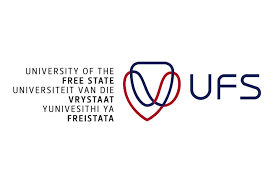University of the Free State: Students hear from textbook writer about conservation genetics
It is an important and exciting time to be doing research in conservation genetics. This is according to Prof Gordon Luikart, Professor of Conservation Ecology and Genetics at the Flathead Lake Bio Station at the University of Montana in the United States.
Prof Luikart, whose primary research focus is the application of genetics to the conservation of natural and managed populations, recently delivered a lecture, The Expanding Role of Genetics/omics in Wildlife Research and Conservation, on the Bloemfontein Campus of the University of the Free State (UFS). The lecture, hosted by the Department of Genetics, was attended by a group of students and lecturers in conservation and a number of related fields.
He is one of the leading scientists in the field of conservation genetics, including integration of genomics in conservation projects. He is also co-author of the textbook Conservation and the Genomics of populations – the current prescribed textbook for GENE3744.
Species threatened with extinction
In 2008, the International Union for Conservation of Nature (IUCN) stated that approximately 10-20% of all vertebrate and plant species are threatened with extinction over the next few decades. In 1984, American biologist Edward O Wilson also said that it will take millions of years to correct the ongoing loss of genetics and species diversity caused by the destruction of natural habitats. “This is the folly our descendants are least likely to forgive us.”
Prof Luikart is of the opinion that genetics has enormous potential to help manage wildlife and prevent extirpation. “My research works to realise this potential and help wildlife managers conserve populations and ecosystems,” he says.
Conservation managers and biologists have understood the risks of inbreeding for more than 100 years. In his lecture, one of the aspects of genetic conservation he focused on, was the negative effects of inbreeding and how this can be reversed using genetic rescue.
With the genetic rescue study, they found that the gene flow into recently isolated populations can increase individual fitness and population growth. He proposed that conservation managers should consider genetic principles and rescue as practical and important tools.
Prof Luikart also provided a list of information that can be retrieved from molecular genetic data to help conservation managers. This includes intel on census and effective population size, gene flow and dispersal, local adaptation and selection, forensics, genetic identification and law enforcement, and disease ecology and transmission.
Non-invasive genetic monitoring
In terms of detecting gene flow, he focused on a study about non-invasive genetic monitoring that was conducted in the Yellowstone Park. Prof Luikart and a group of students collected the shed hair and faeces of the grizzly bear, obtained from trees and hair traps, which were used as a source of DNA.
They established, for instance, that inbreeding depression is more common and stronger than previously thought in natural populations. Genetic monitoring, using non-invasive methods as described, has been found to be an effective tool that conservation managers should consider for detecting inbreeding and loss of genome-wide variation.
His research on the bighorn sheep, the alpine ibex, and the black bear informed most of the findings he discussed during his lecture.

